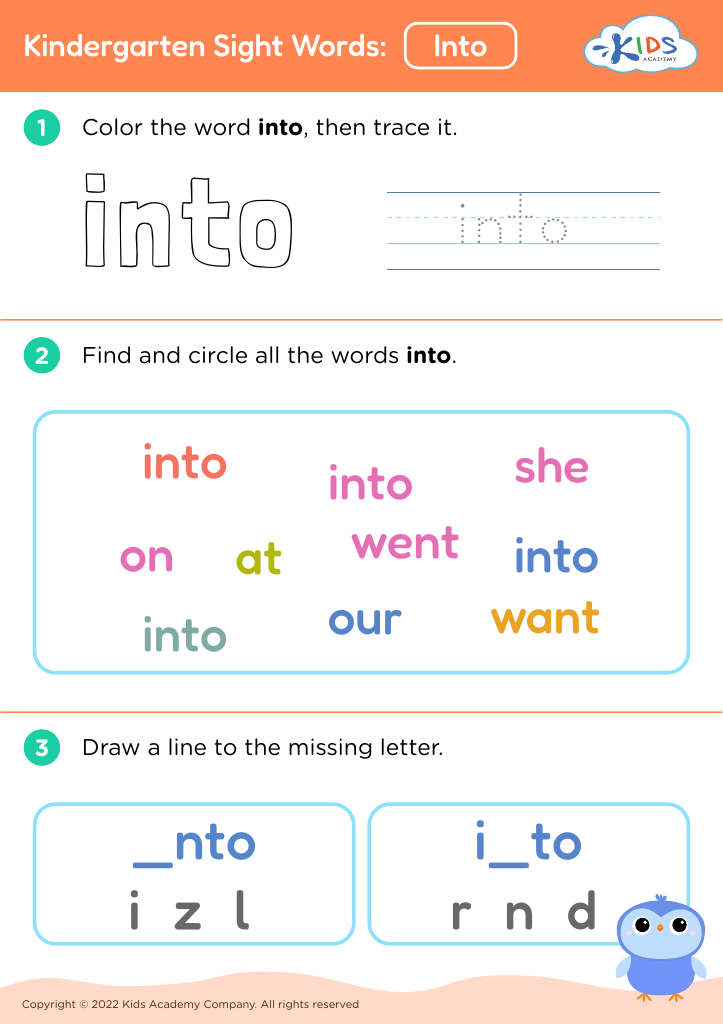Recognizing Patterns Reading Worksheets for Ages 4-6
3 filtered results
-
From - To
Discover our engaging "Recognizing Patterns Reading Worksheets" designed specifically for children aged 4-6! These fun activities help young learners identify and understand patterns, essential building blocks for reading skills. Each worksheet features vibrant illustrations and simple exercises that make learning enjoyable and effective. Students will practice recognizing visual and auditory patterns, enhance their cognitive skills, and improve their vocabulary. With a variety of interactive tasks, these worksheets are perfect for home or classroom use. Foster a love for reading while developing critical thinking abilities in your little ones! Explore our collection today and watch them thrive!
Recognizing patterns in reading is a crucial skill for children ages 4-6, as it lays the foundation for literacy development. Early exposure to patterns helps young learners identify sequences, relationships, and structures in language, enhancing their ability to decode words and comprehend narrative flows. When children can recognize patterns—like rhymes, syllables, or repetitive phrases—they become more confident in their reading abilities.
Moreover, understanding patterns fosters critical thinking and problem-solving skills. As students encounter repeated elements in stories, they develop the ability to anticipate and predict, which streamlines comprehension and engagement with texts. This predictive skill also powers their creativity, as they start to create their own stories with familiar patterns in mind.
Additionally, pattern recognition isn’t just limited to language; it extends to math and science, preparing children for comprehensive learning experiences. By caring about this aspect of early education, parents and teachers equip children with essential tools that support academic success across disciplines. Engaging children with books that feature rhythmic text or patterned narratives encourages a lifelong love for reading, ultimately setting the stage for future learning and critical literacy skills.

























